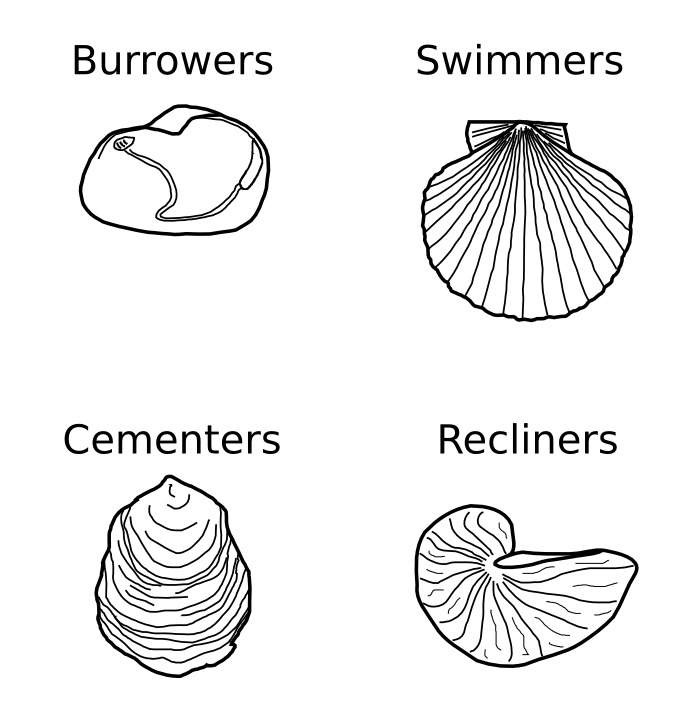- Home
- Rocks
- Type fossils
- Fossil Specimens
- Minerals
- Glossary
- Stratigraphic Chart
- Michel-Levy Chart
- Classification of igneous rocks
- University of Cambridge
- Department of Earth Sciences
- ESC Library
- Moodle
- Sedgwick Museum
- DoITPoMS
- Mindat.org
- Microfossils
- Bryozoans
- Webmineral
- Tree of Life
- CrystalMaker
- Virtual Microscope
Bivalve
Title
Bivalve
Description
Taxonomy
Phylum: Mollusca
Class: Bivalvia
Diagnostic features
Palial line/palial sinus
Adductor muscle scars
Growth lines
Dorsoventral symmetry (some exceptions, for example Gryphaea)
Two hinged valves
Umbo
Hinge
Gills (rarely preserved)
Stratigraphic range
Cambrian to present
Way of life
Bivalves have occupied many environmental niches, living in a variety of ways:
Epifaunal, infaunal, nektonic
Marine, freshwater, brackish
Filter feeders through gills
Majority of bivalves begin life in a planktonic larval stage
By looking at the shell shape and palial sinus of fossil bivalves it is possible to say something about its mode of life.
Advanced notes
Apparent increase in bivalve diversity over time (or is this just a preservational bias?)
Bivalves makes their shells out of calite, aragonites, or both
The adductor muscles are used to keep the shell of the bivalve closed. This means that when they are relaxed, the ligament between the valves pulls them apart, so the 'relaxed state' for bivalves is 'open'.
The depth at which infaunal bivalves burrowed can be inferred from the palial sinus. The more prominent the palial sinus, the deeper the bivalve burrowed. This is because the size of the palial sinus is indicative of the size of siphon needed, which in turn depends on the depth of the burrow (deeper burrow, larger siphon).
Specimens
Links
youtube: scallops swimming
Cambridge University Museum of Zoology: Lifestyles of bivalves
Yale Peabody Museum of Natural History: differences between bivalves and brachiopods
Learn about types of preservation
Also
Go to the front of the 1A Lab. A display on the right hand side (by the window) shows a number of bivalves in life position. Have a look at how they have adapted their shape and other features to their way of life.
Collection
Citation
“Bivalve,” 1A Collections, accessed April 9, 2024, https://wserv3.esc.cam.ac.uk/p1acollections/items/show/85.


